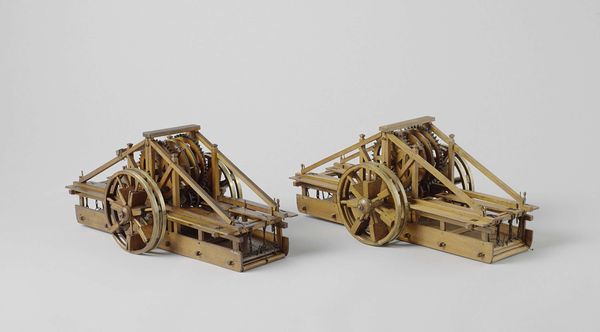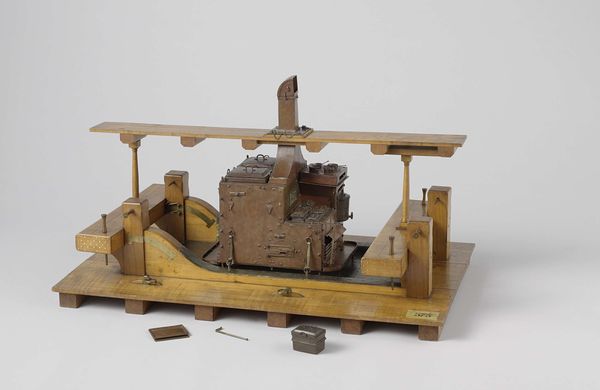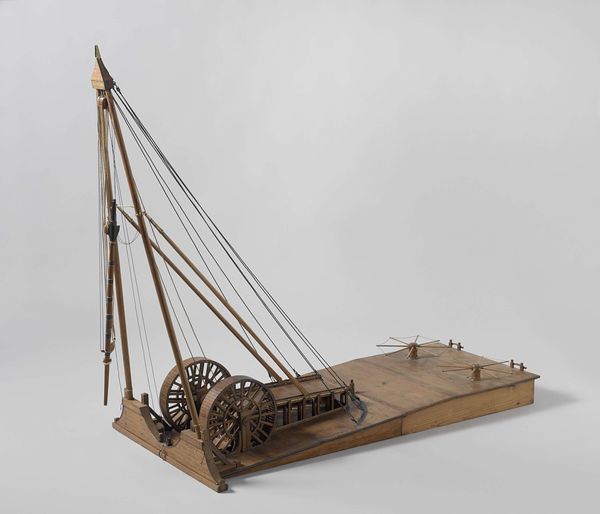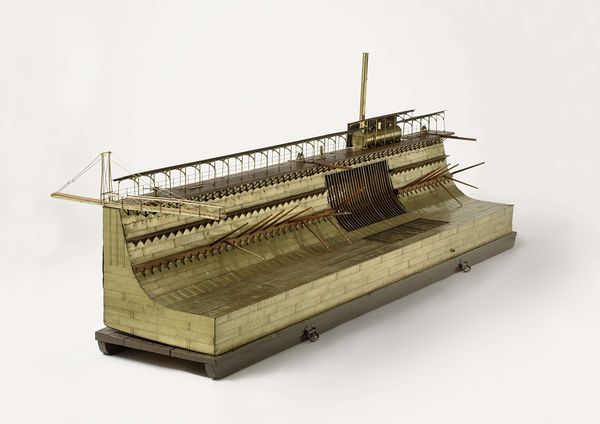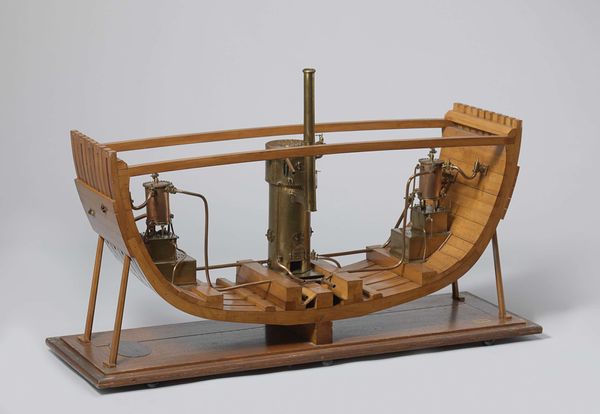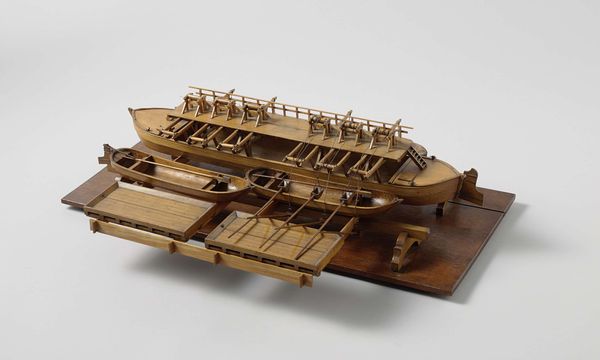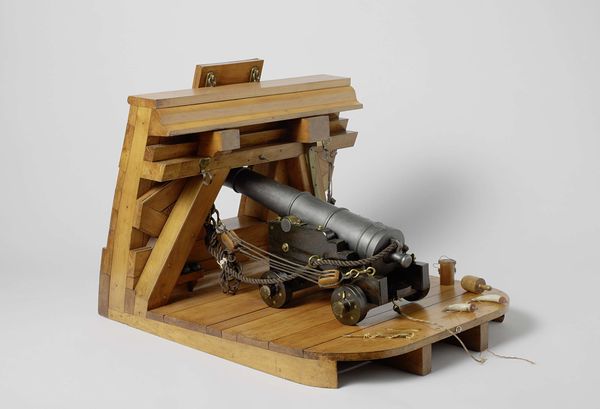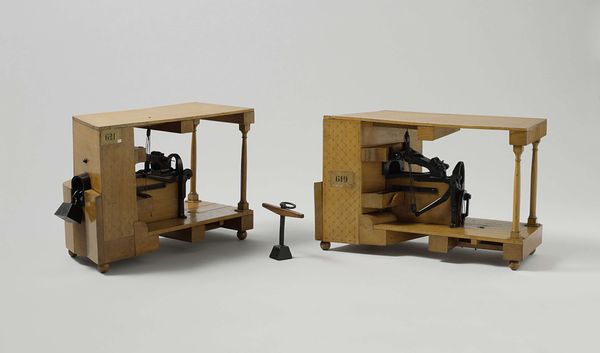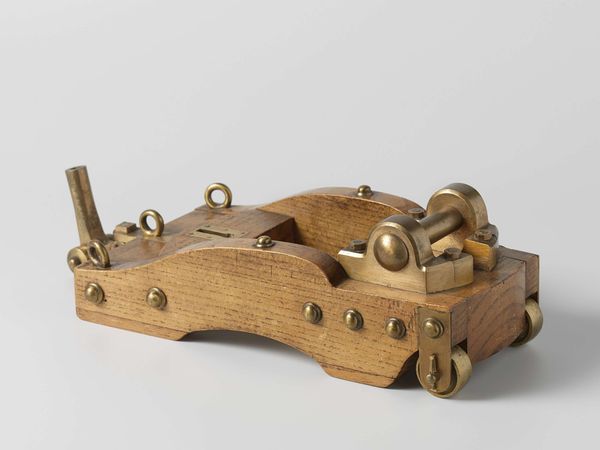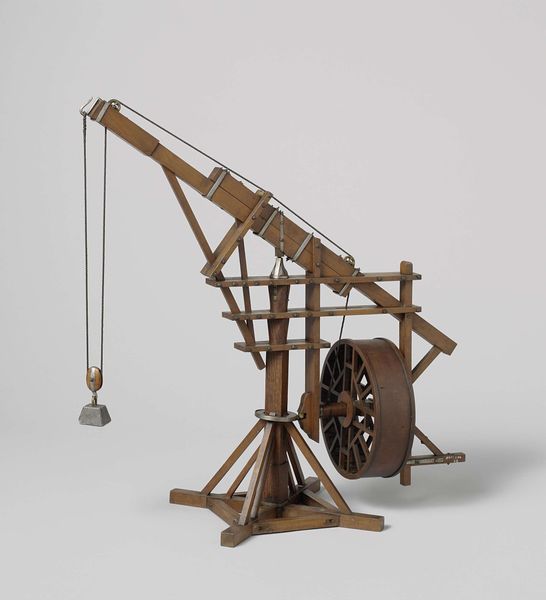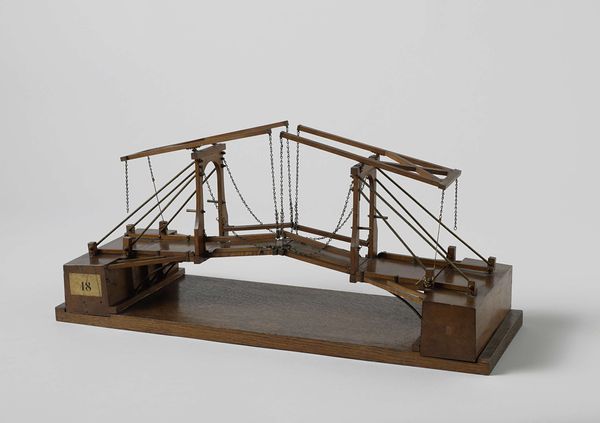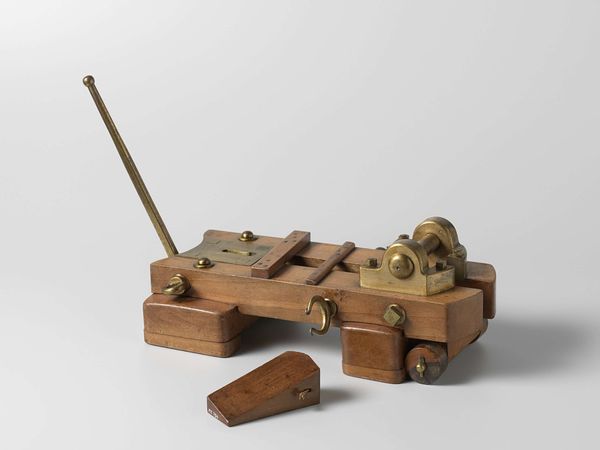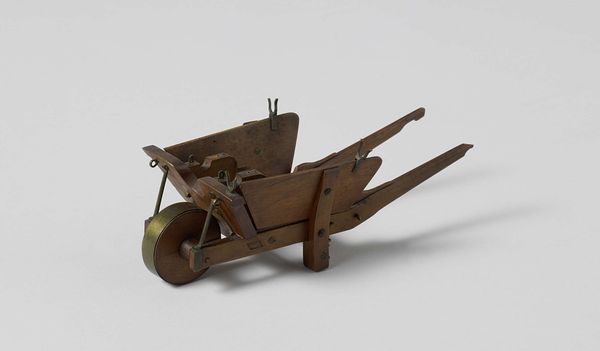
sculpture, wood, architecture
#
neoclassicism
#
structure
#
sculpture
#
sculpture
#
architecture model
#
wood
#
architecture
Dimensions: model height 39 cm, model width 53 cm, model depth 49.5 cm, packaging capsule height 44 cm, packaging capsule width 56.5 cm, packaging capsule depth 54.5 cm
Copyright: Rijks Museum: Open Domain
Editor: Here we have the "Model of a Life-Saving Cart for Shipwrecks," created around 1832, probably by someone at Rijkswerf Rotterdam. It’s crafted from wood, a miniature sculpture almost. I'm struck by the... optimism embedded in such a functional object. Like a little hope on wheels. What stands out to you? Curator: Oh, that's beautifully put! I agree; there’s an inherent humanism, a real warmth despite its, dare I say, slightly clunky construction. For me, it’s also about the Age of Enlightenment meeting the very real perils of the sea. You see the precision, the ambition for order and control—Neoclassicism embodied. But can you imagine the chaotic storms these were meant to combat? It’s quite a juxtaposition, isn’t it? Almost dreamlike... Editor: Yes, definitely that tension between order and chaos! Were these carts ever actually used? Or were they purely aspirational? Curator: Now, that's a brilliant question. As a "model", it represents forward-thinking but also an appeal. Maybe there were issues implementing the technology at scale? Regardless, someone believed in its promise, in saving lives. Imagine the minds involved— naval architects, engineers, woodworkers—all united by a desire to cheat fate! It’s a tiny, poignant monument to human ingenuity, I feel. Editor: I hadn't thought about all the different hands that would've touched it! Seeing it as a testament to collaboration really changes the way I view the piece. Thanks! Curator: My pleasure! And you’ve reminded me that even the most "functional" objects can resonate with profound emotional depth. Cheers!
Comments
No comments
Be the first to comment and join the conversation on the ultimate creative platform.
